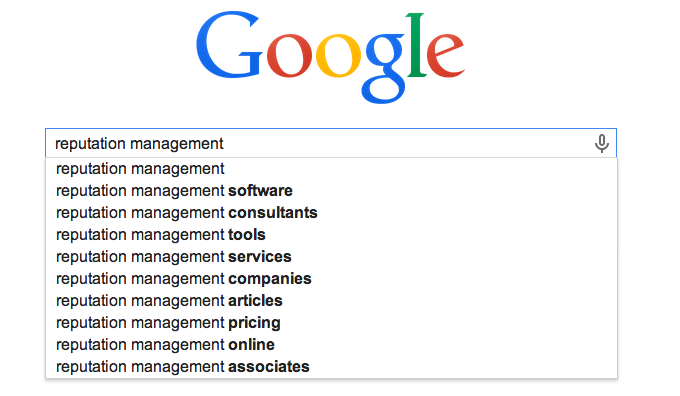As more and more people connect to the Internet (and spend more time there than ever before), it has become extremely easy for an individual to research a product or company at any point in the sales cycle. Because of the ease of seeing reviews, it has never been more important to make sure that your online reputation is being handled appropriately.
But what is the appropriate way to handle your online reputation before it becomes a problem?
What Is Reputation Management?
Let’s start by defining reputation management. In short, reputation management is when you or your company work to keep negative results from showing up in the Google search results.
Most of the time, people don’t even think about reputation management until it is causing problems with a business. Those problems can bring a variety of outcomes, including huge loss of revenue and trouble finding new customers and business partners.
But what’s the solution? How do you keep this from happening to your business? The best way to handle this is to work on your reputation management strategy before you ever have a problem.
What Is A Business To Do?
If you’ve decided to take a proactive approach to your reputation management, then you’ve got some work ahead of you.
The first step we need to take is to build profiles and claim other properties that we can rank for the brand name.
Some of the properties that I use on a routine basis are the following:
- companyname.com/.net/.org
- Blogspot
- WordPress
- Pastebin
- Angel.co
- CrunchBase
- BrandYourself
- Scribd
- Quora
- About.me
- Tumblr
- Google+
- Wikipedia
You might look at this list and think that there are too many, since you only need to control the first ten spots. However, in my experience, it can be hit or miss how each of these different sites or profiles will rank. It’s usually best to take a shotgun approach and get a lot of properties out there.
Another added benefit is that by creating all of these profiles and sites you will have a diverse group of properties to rank. And we all know that Google likes having diverse results in the SERPs.
Populate the Profiles and Sites
After you’ve created the profiles and sites, you need to get them completed. Depending on the site or type of profile, this can mean a variety of things.
For example, if you’ve created a Quora account and are trying to rank the user profile page, you need to make sure that the profile is completely filled out. After that, I would then go and follow a topics. I would follow a few people. I would answer some questions and maybe ask a few.
If it were a site such as a Blogspot.com blog, I would write a few articles about the company. Maybe an article about how the company was formed and one about the services and products the company provides. This way you can cover a lot of keywords and potentially prevent negative things showing up for searches you hadn’t even planned on!
Another benefit to having so many properties to work with is that you can interlink all of them for extra ranking power.
Rank The Properties
In some cases, once you’ve created these profiles and done some interlinking, a few of the profiles will start to show up in the SERPs. Unfortunately, this is the exception more than the rule. Usually, creating the properties and populating them with content is just the beginning. The hardest part is yet to come!
Next, you will need to promote these properties. If you have established social profiles that is one good way to start. Outside of that, you can start getting in the trenches and doing some link building.
Conclusion
Now you’re ready to go out and keep your brand’s reputation clean! Here are some easy action items for you to take in order to make sure that you get started on the right track.
- Fill out social media profiles for your company, such as Facebook and Twitter
- Use the profiles on social sites to build up their authority (like, comment on posts, push out updates)
- Create properties for your company on other platforms such as Tumblr and WordPress.com
- Write and post quality content for the other properties such as Tumblr and WordPress.com regularly
- Rank the social media profiles and other properties
Online reputation management is not an easy or a quick process. However, it is one that you will be very happy you did if negative press hits your company, but your search results are safe and sound.




